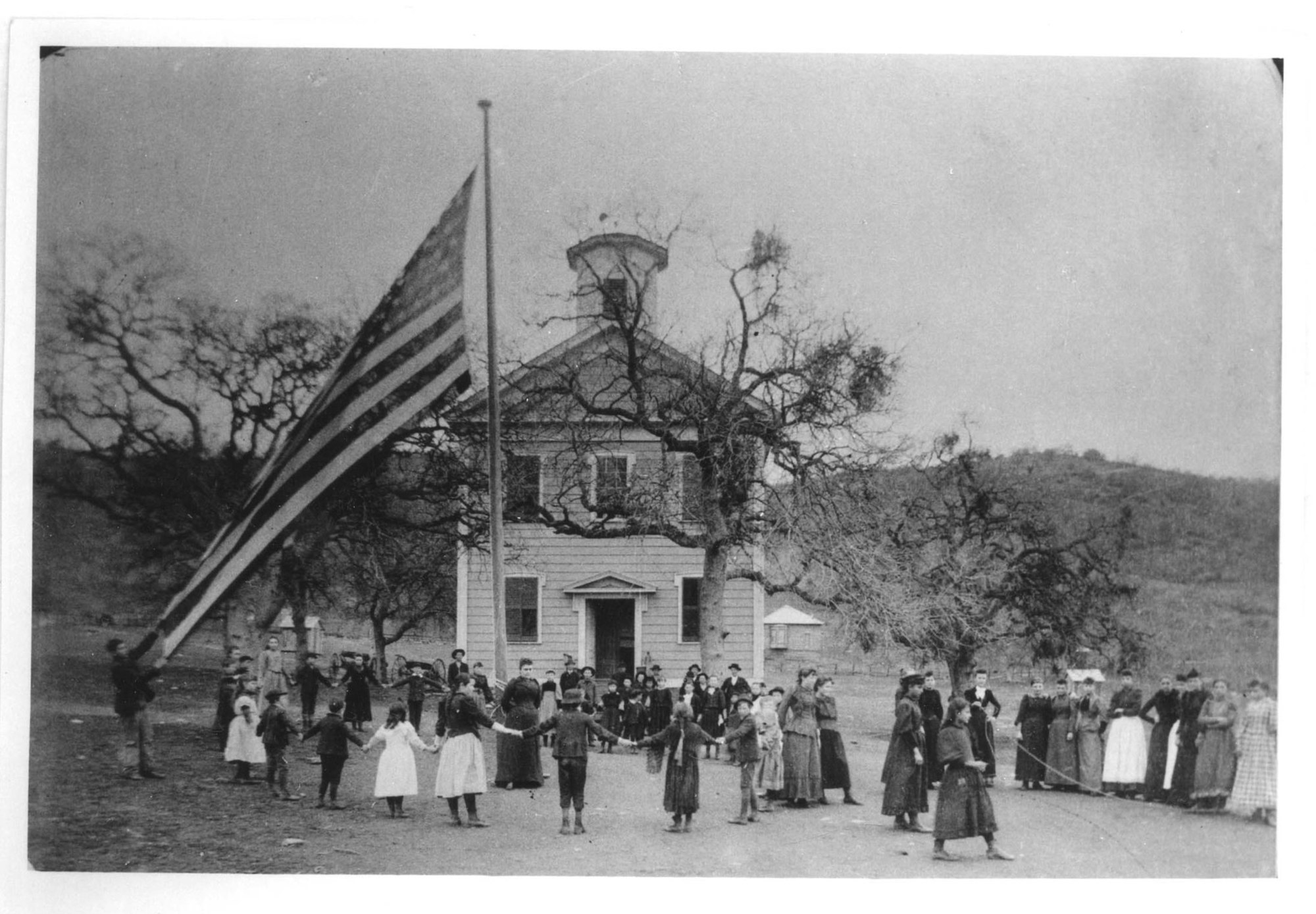Copperopolis

From its beginnings in 1860 to the end of World War II, Copperopolis has been directly related to and affected by the extraction and production of copper ore. Copper was first discovered in the area in 1860 by Hiram Hughes on Gopher Ridge at Quail Hill, and a few months later at the Napoleon Mine on Hog Hill, about six miles southwest of Copperopolis. Shortly thereafter a copper-bearing “gossan” was discovered by W.K. Reed and Thomas McCarty in the Copper Cañon Mining District, on the Union Copper Claim, and a short time later a second strike was made on the Keystone Claim. Other important claims included the Calaveras and the Empire. One year later the community that developed around the strikes became known as Copperopolis, the name derived from the word “copper,” plus the Greek word “polis” meaning city.
From rolling hills of grazing land, the area was transformed almost overnight into a booming community due to the extraordinary need for copper for munitions and shell casings for the American Civil War, developing into the second-most important copper district in the United States. By 1861 there were over 28 business establishments in town, a number that grew to over 90 advertised in the Copperopolis Courier in the period from 1865-1867. The strike came at a time when the Mother Lode gold mines were almost dormant and, although the copper excitement promised more than it ultimately delivered, for seven years copper was “king” in Calaveras County.
The town that owed it existence to the Civil War developed around the “Plaza,” with streets named for their associations with the war: Union (now Main), Lincoln, Grant, and Sherman. Staunchly northern in their sympathies, the town sported in addition to Union Street, the Union Hotel, Union Mine, and Union Bridge. Of the more than 60 commercial establishments which once lined the streets of the community in those years, only seven were constructed of brick, and only four are extant: two stores, a church, and the armory.
The center of town was destroyed in a conflagration in 1867, and, with the cessations of the Civil War and the need for copper for shell casings, was never completely rebuilt. Coinciding with the falling world prices of copper, the high cost of transportation, and the fact that most of the readily accessible ore was mined out, the town was virtually deserted. It had, however, for some five or six years, reigned as the most active business and mining community in Calaveras County.
In the early years ore was transported in bags of burlap and jute to Stockton by pack animals, and from there shipped by riverboat to San Francisco where it was reloaded and sent by sailing ship around Cape Horn to Atlantic ports and Swansea, Wales, to be smelted and refined. After the completion of Reed’s Turnpike, however, teamsters hauled the ore, which amounted to more than a million and a half pounds in a six-day period in 1865. By the early 1900s ore was transported by the steam engines of the Mountain Traction Company over a separate traction road to the railhead at Milton for transshipment to Stockton.
The community experienced another modest copper boom in the late 1880s, when the Ames Family of Massachusetts, owners of the Ames Tool Company, purchased the Union Mine, dewatered it and constructed a new smelter, operating until 1892. In 1899, a newly formed company, the Union Copper Mining Company, purchased the original claims and most of the properties in town. These operations were curtailed in 1902 and it wasn’t until 1909, when the Calaveras Copper Company purchased the Union interests and most of the town and commenced operations in earnest, that prosperity again abounded.
The mine was de-watered again, a new smelter constructed, and then began a long period of almost continuous operation. By this time Copperopolis was no longer the leading producer in California, but it did continue as the second- or third-largest producer in California through the year 1930. During this period copper prices fluctuated up and down, but the company continued to operate on a small scale, providing an important economic base to the local economy. Mining commenced again briefly during World War II at the nearby Keystone Mine, but shut down in 1945 and has been idle since.
Today the headframes and mill buildings of the mines have disappeared, leaving behind large slag and mine waste piles with the distinctive rust color of copper gossan, with only basement depressions remaining to show the locations of the many once booming business establishments. As noted by a journalist in 1861:
"There is great life and activity to business here. The hum of busy mechanics amid the rising mass of buildings is cheerful and gives the outsider an idea of the importance of this new mineral discovery."
This time, however, the discovery is land for subdivision.
